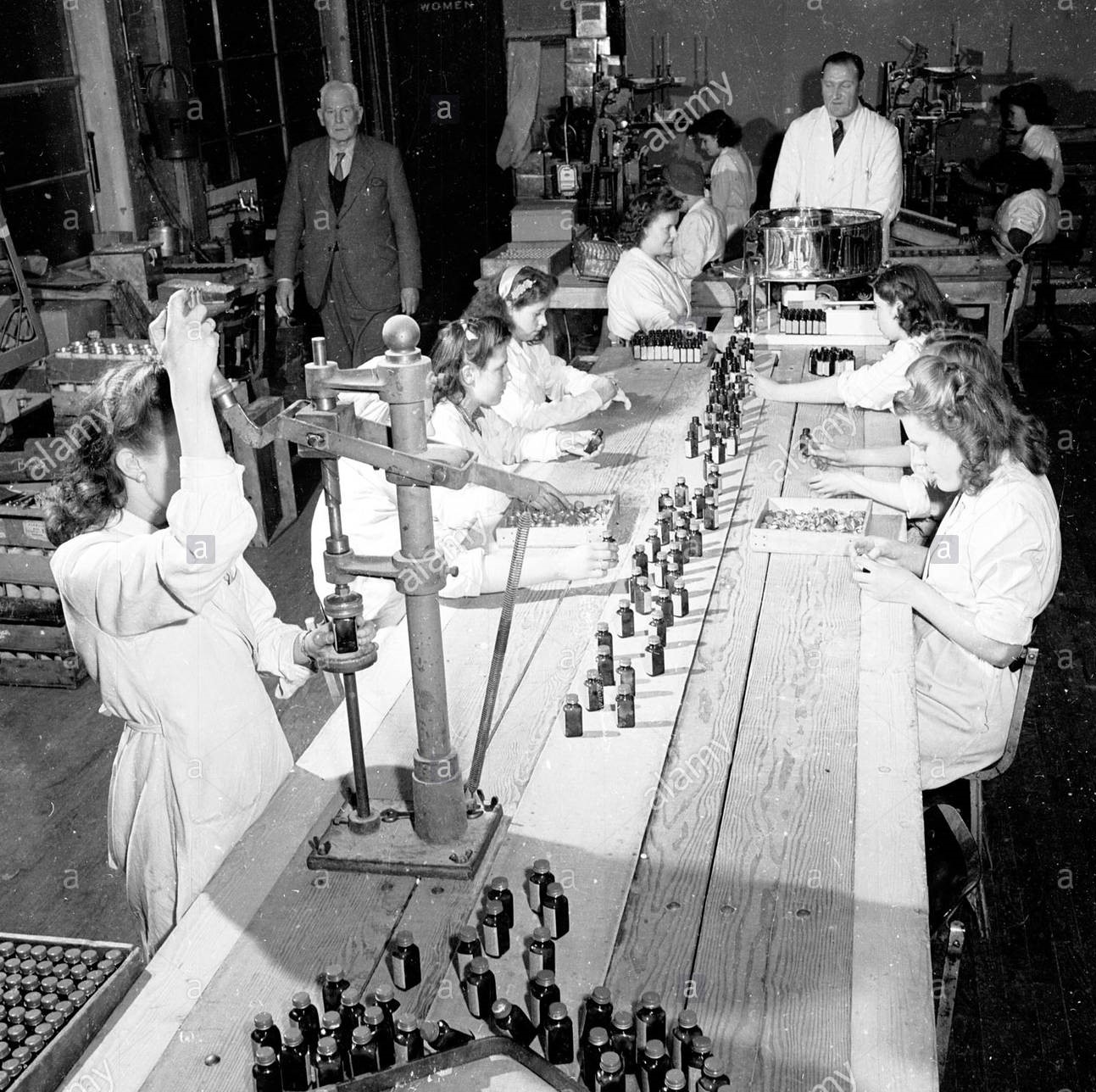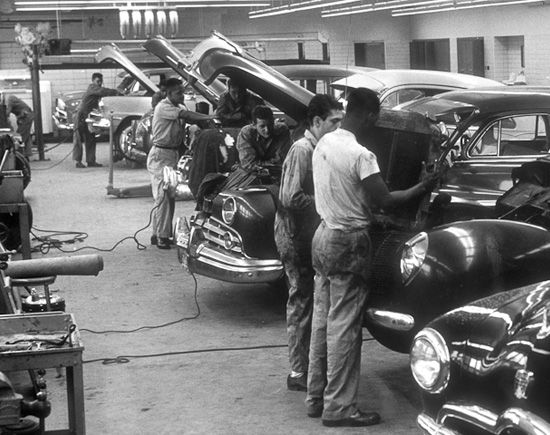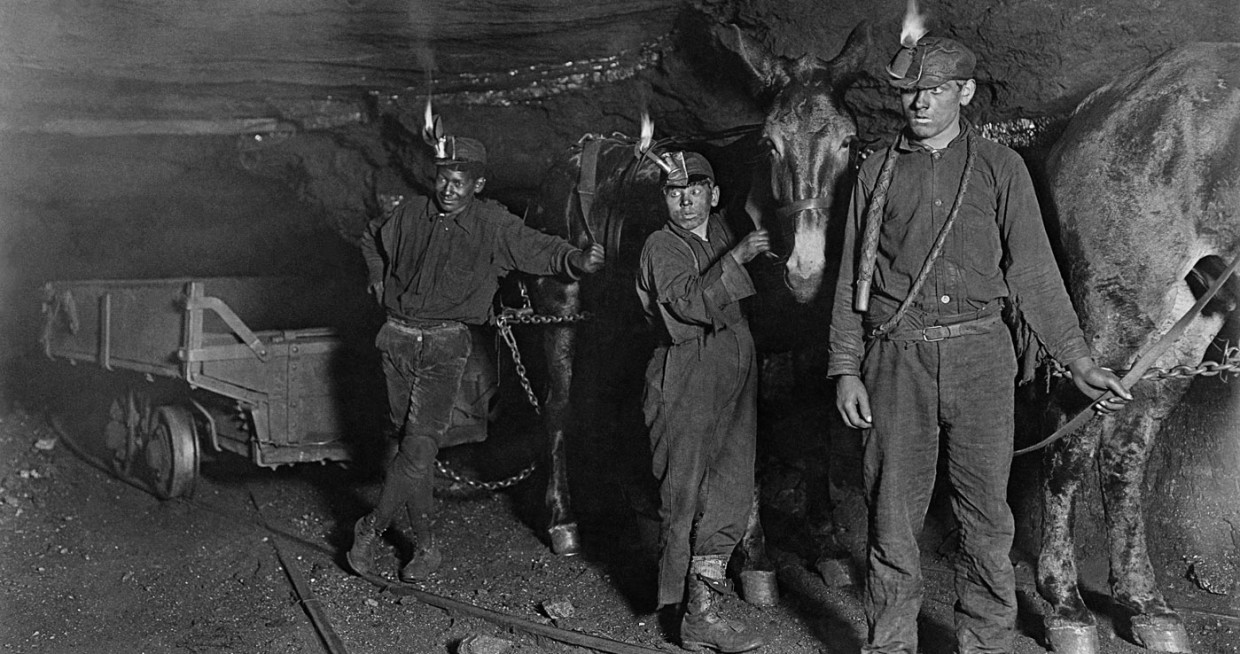Grandparents' Generation (1950s through 1990s)
Note: The "Grandparents' Generation" is broken up into "Women's Professions," "Men's Professions," and "Gender-Neutral Professions" because men and women typically worked different jobs in the 1900s. Nowadays, however, there is less division in the workforce and men and women work similar jobs and there are no specific "female" or "male" jobs.
Women's Professions
In the 1940s, women took up primarily male jobs because the men were fighting on the front lines. Women were an integral part of America's war efforts because they kept the country running and also supplied the soldiers with gunpowder, uniforms, and food. Women in the mid and late 1900s had more job opportunities compared to their predecessors from the 1800s and even early 1900s, but salaries were still limited compared to those of men and most women were expected to be housewives. In the 1950s, less women were employed because men were coming back from fighting in World War II. Television advertisements and magazines showed smiling women cooking, cleaning, or taking care of childen. Women were encouraged to leave their jobs and leave it to the men. With job experience and career goals, however, women began looking for jobs and rejecting the previous belief that a woman's place was at home. Positions like secretaries, teachers, and assembly line workers were most common among women.
Men's Professions
In the mid and late 1900s, most men occupied jobs as soldiers, construction workers, farmers, miners, mechanics, and warehouse workers. With most women at the time staying at home, men made up most of the workforce. The jobs were mainly industrial or agricultural, but the country was slowly transitioning into an era of technology. In the 1950s and 1960s, more men than women took up the following professions:
- Dispensing Opticians
- Bakers
- Businessmen
- Transportation workers
- Human Resources Workers
But in the 1970s and 1980s, more women than men occupied the those jobs because more jobs in the technology field were being created and men were employed there instead.
Gender-Neutral Professions
Though most jobs were specific to either men or women, some professions were done by both genders.Below are a few examples of gender-neutral jobs:
- Secretaries
- Bakers
- Teachers
- Social workers
- Sales Persons
These jobs were likely done by both genders since women could have worked these jobs, but many stayed as homemakers - a few women worked these jobs and the remaining job opportunities were filled by men.
Our Generation (2000s to now)
Most jobs today aren't specific to any gender since people understand that one gender isn't necessarily stronger, smarter, or better in any way than the other. People are encouraged to pursue professions regardless of gender. It's acknowledged that people shouldn't be hired based on gender, more so after problems concerning biases against the LGBTQ+ community gained awareness.
Even with all this understanding of gender biases and gender-based inequality, more men than women occupy jobs in the technology field, specifically. Many organizations and companies aim to even out the ratios of men and women in tech fields. For example, our school district's robotics team has set goals for the percentage of female team members and organizations like Michigan Council of Women in Technology aim to increase the number of women pursuing technology-related professions.
Below is a list of our generation's most popular jobs, according to Forbes.
- Data Scientist
- Java Developer
- Front End Engineers
- Data Engineer
- Software Developer
Some other popular jobs include:
- Doctor
- Teacher
- Accountant







